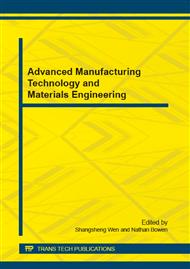p.352
p.356
p.363
p.370
p.376
p.381
p.385
p.390
p.394
Extension to Elasto-Plastic Version of a Fracture Mechanics Method
Abstract:
This paper develops a three dimensional elastic fracture analysis method, PDS-FEM (Particle Discretization Scheme Finite Element Method), to its elasto-plastic version. The Newton-Raphson iteration method is adopted for solving material nonlinearity, and the conjugate gradient method is applied to solve the linear equations of FEM. In order to apply the fracture analysis method to the engineering scale analysis, CPU based parallel computing technology is applied, and the computation speed is highly advanced. In this trial test, a simple stress based failure criterion is employed for the failure analysis of a cantilever steel beam. The numerical results without fracture match well with the commercial FEM software, ANSYS’s, which verifies the accuracy of the developed platform.
Info:
Periodical:
Pages:
376-380
Citation:
Online since:
December 2014
Keywords:
Price:
Сopyright:
© 2015 Trans Tech Publications Ltd. All Rights Reserved
Share:
Citation:


